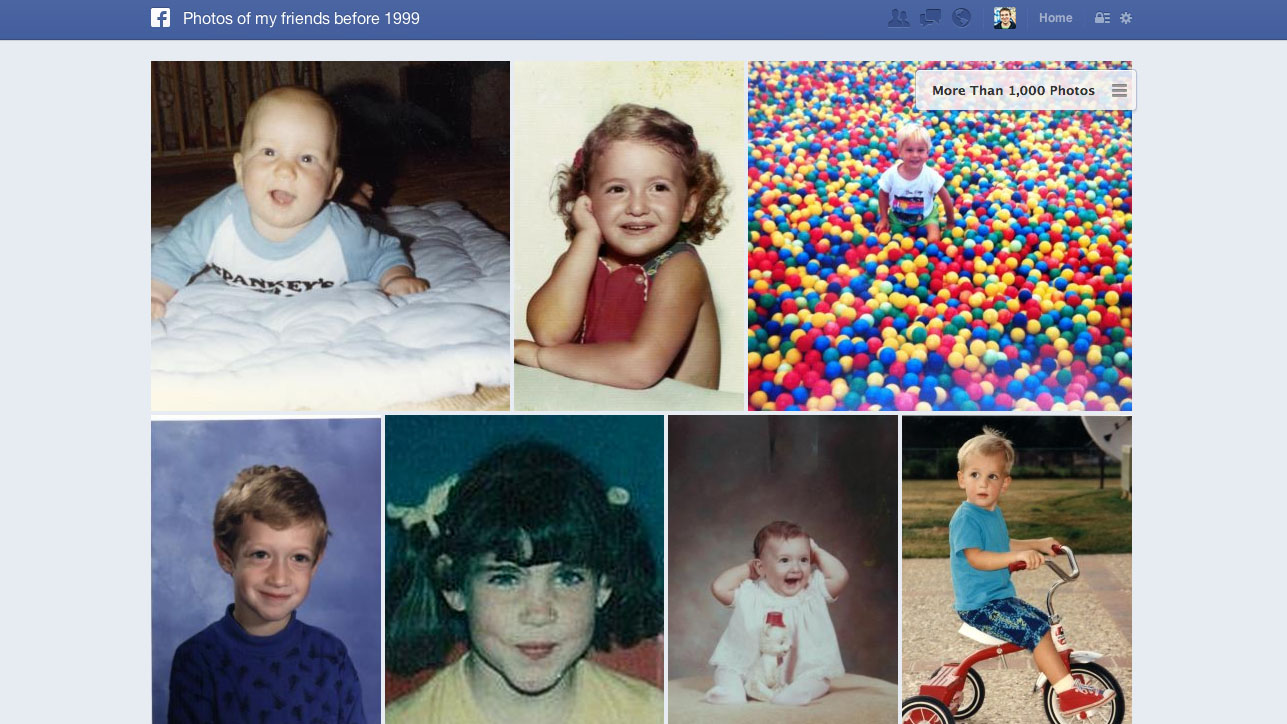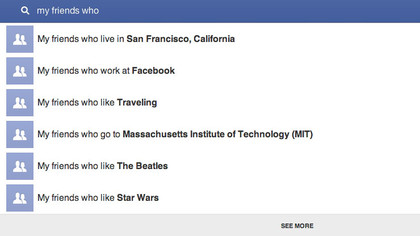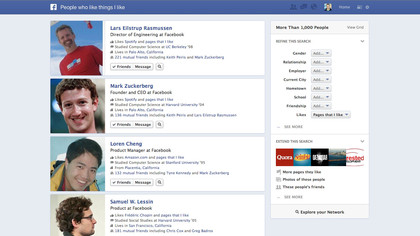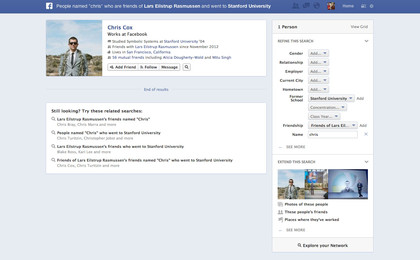Facebook Graph Search: what is it and how do you use it?
Facebook search gets supercharged – just ask it a question

Well, Facebook didn't reveal a new phone or operating system today - instead the social network announced a new Graph Search. This new feature offers a multitude of new ways to use Facebook's search function to help you find the right people, photos and more.
What is Graph Search?
You can still search in the usual way, but you can also ask Graph Search to find exactly what you're looking for. Launching now is the beta (or early) version of Graph Search, and it focuses on four areas: people, photos, places and interests. It's only available in U.S. English for now.

What is Graph Search?
Graph Search is a new way for you to find people, photos, places and interests that are most relevant to you on Facebook.
You'll be able to find others even though you may not know their name, as well as learn more about them and make connections. What's more, you can explore photos, quickly find places like local attractions and restaurants, and learn about friends' common interests such as music, movies and books.
Graph Search appears as a bigger search bar at the top of each page. As you start to type, suggestions appear in a drop down. You can refine your search using the tools on the right-hand side of the page.
"When you search for something, that search not only determines the set of results you get, but also serves as a title for the page," says Facebook director of engineering Lars Rasmussen. "You can edit the title – and in doing so create your own custom view of the content you and your friends have shared on Facebook."

What can you ask Graph Search?
Your Graph Search query can be very specific. One example given at Facebook's launch event was "people named Chris who are friends of Lars and went to Stanford" – so you really can find someone you met once and remember by mere association.
Sign up for breaking news, reviews, opinion, top tech deals, and more.
You can also use a search example like "my friends who like Lady Gaga" or "photos of Sue taken in Bristol in 2005."

Why has Facebook launched Graph Search?
Facebook says there are more than a billion people on the social network who have posted 240 billion photos and have more than a trillion connections. The company believes it needs to provide "the tools to map out their relationships with the people and things they care about." Facebook refers to this map as "the graph."
"When Facebook first launched, the main way most people used the site was to browse around, learn about people and make new connections," says Rasmussen. "Graph Search takes us back to our roots and allows people to use the graph to make new connections."

Is Graph Search taking on Google?
Graph Search and web search are very different, explains Rasmussen. "Web search is designed to take a set of keywords (for example: 'hip hop') and provide the best possible results that match those keywords.
"With Graph Search you combine phrases (for example: "my friends in New York who like Jay-Z") to get that set of people, places, photos or other content that's been shared on Facebook. We believe they have very different uses."
What about Graph Search privacy?
Facebook says that Graph Search has been built with privacy in mind, primarily because often it's searching content that's very appropriate to you, but its completely different from something that somebody else would see if they did the same search.
According to Facebook, the Graph Search "respects the privacy and audience of each piece of content on Facebook," meaning you'll only see results you could already see elsewhere on Facebook.
What's next for Graph Search?
The social network says they're "very early" in the development of Graph Search. It's only available in the U.S. today, and you can search for only a subset of content on Facebook – people, photos, places and interests only at the moment. Posts and some auto-generated content – such as song plays from Spotify – can't yet be searched.
What are some example Graph Searches?
People: "friends who live in my city"; "people from my hometown who like hiking"; "friends of friends who have been to Yosemite National Park"; "software engineers who live in San Francisco and like skiing"; "people who like things I like"; "people who like tennis and live nearby"
Photos: "photos I like"; "photos of my family"; "photos of my friends before 1999"; "photos of my friends taken in New York"; "photos of the Eiffel Tower"
Places: "restaurants in San Francisco"; "cities visited by my family"; "Indian restaurants liked by my friends from India"; "tourist attractions in Italy visited by my friends"; "restaurants in New York liked by chefs"; "countries my friends have visited"
Interests: "music my friends like"; "movies liked by people who like movies I like"; "languages my friends speak"; "strategy games played by friends of my friends"; "movies liked by people who are film directors"; "books read by CEOs"
Dan (Twitter, Google+) is TechRadar's Former Deputy Editor and is now in charge at our sister site T3.com. Covering all things computing, internet and mobile he's a seasoned regular at major tech shows such as CES, IFA and Mobile World Congress. Dan has also been a tech expert for many outlets including BBC Radio 4, 5Live and the World Service, The Sun and ITV News.